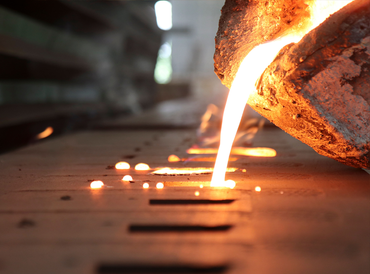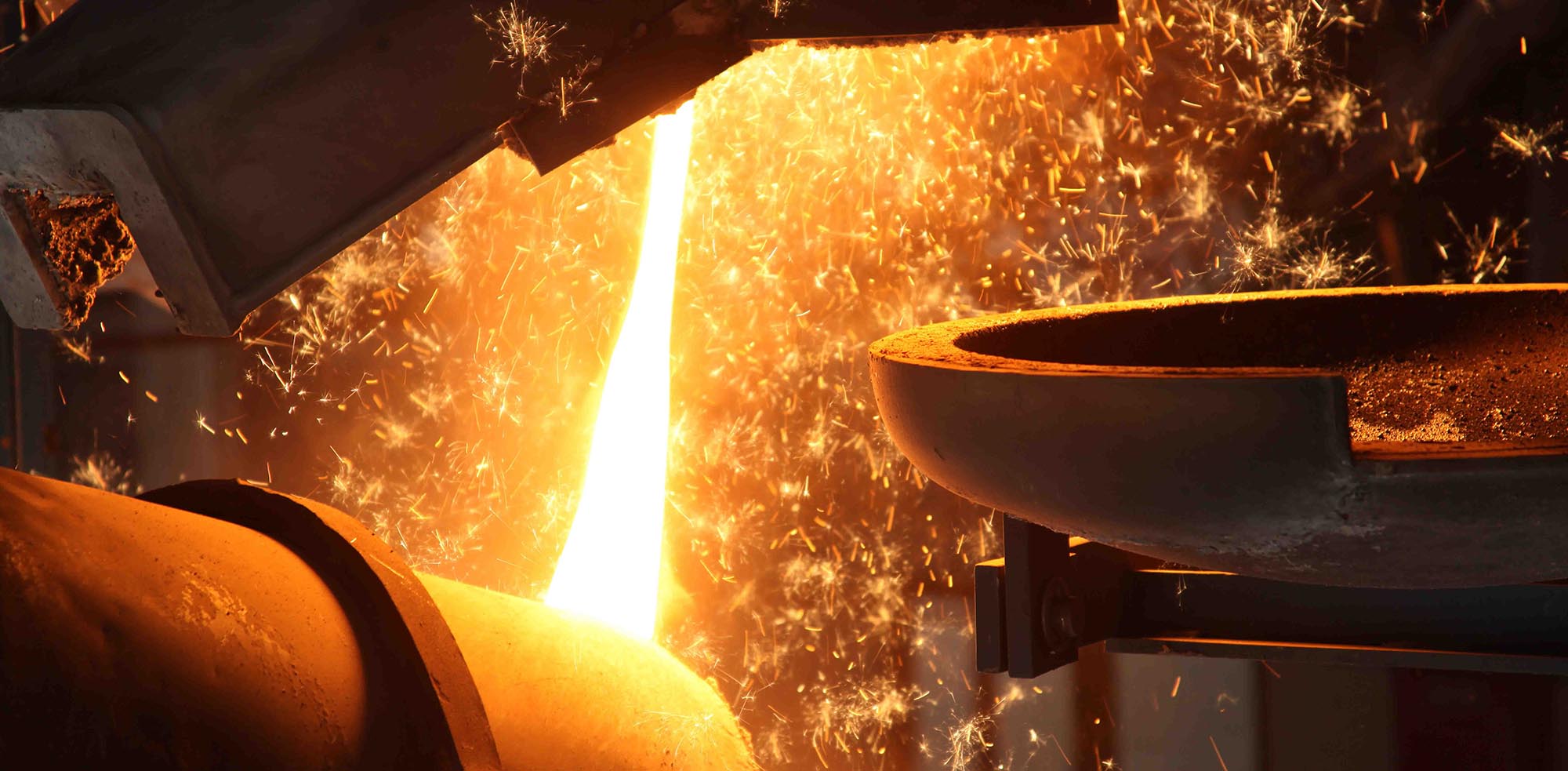Discover the Innovative Methods Utilized in a Metal Foundry for Superior Casting Outcomes
In today's competitive production landscape, metal foundries are progressively adopting ingenious techniques to enhance spreading results - Aluminum Foundry. Advanced computer simulations enable for precise modeling of molten metal habits, while 3D printing allows fast production of intricate molds. In addition, eco-friendly products and automation improve procedures. These developments assure substantial improvements in effectiveness and quality control. Nevertheless, the influence of these modern technologies on sustainability and production practices continues to be to be totally checked out
Advanced Computer Simulations in Metal Casting
Advanced computer simulations have transformed the metal casting procedure by boosting accuracy and efficiency. These innovative devices allow designers to develop digital designs of actors parts, allowing them to predict the habits and examine of liquified metal throughout the spreading stage. By mimicing numerous criteria such as temperature, circulation price, and air conditioning prices, producers can recognize possible problems prior to physical manufacturing begins.
This aggressive technique reduces waste and decreases pricey errors, ultimately resulting in improved item high quality. Furthermore, simulations promote the optimization of mold and mildew designs, making certain that they meet the particular requirements of each task. The combination of computational liquid dynamics (CFD) and finite component evaluation (FEA) further adds to the accuracy of these simulations, giving understandings that were formerly unattainable. Therefore, advanced computer system simulations have come to be an indispensable part of contemporary metal foundries, significantly progressing the industry's abilities.
3D Printing for Mold And Mildews and Patterns
3D printing has emerged as a groundbreaking strategy for creating mold and mildews and patterns in the metal foundry sector. This modern technology makes it possible for the rapid manufacturing of complex geometries that standard manufacturing techniques battle to accomplish. By making use of additive production, foundries can produce elaborate styles with reduced preparations and material waste. The ability to produce mold and mildews as needed permits better adaptability in design models, assisting in faster prototyping and alterations.
3D printing can make use of a selection of materials, including metals and plastics, customized to details casting needs. This adaptability improves the precision of molds, resulting in exceptional casting results with enhanced surface area finishes. Furthermore, the reduction in the variety of components called for streamlines assembly processes, further optimizing production efficiency. As foundries remain to take on 3D printing, they are positioned to redefine sector criteria, leading the way for advancement and boosted productivity in metal casting procedures.
Eco-Friendly Products and Processes
As the metal foundry market faces boosting pressure to reduce its ecological impact, the fostering of environment-friendly products and procedures has actually ended up being necessary. Factories are now exploring sustainable alternatives to traditional products, such as utilizing recycled steels and bio-based binders. These materials not only reduce waste however likewise lower power intake throughout production.
In addition, advancements in sand spreading strategies have actually caused using artificial sands that are less harmful to the setting. Foundries are additionally applying cutting-edge procedures like liquified metal treatment that lowers emissions and boosts the quality of cast products.
Water-based finishes have replaced poisonous solvents, promoting a more secure work atmosphere. By incorporating these environment-friendly practices, metal foundries can my review here substantially reduce their eco-friendly impact while preserving high-quality casting outcomes. This shift not only profits the setting yet likewise straightens with the growing read the article consumer need for sustainable manufacturing remedies
Automation and Robotics in Foundry Operations
While the metal foundry industry accepts advancement, the integration of automation and robotics is transforming operations significantly. Automated systems simplify processes such as mold production, metal putting, and casting ending up, greatly improving performance. Robotics assist in the handling of hefty materials, decreasing the danger of office injuries and ensuring safer atmospheres.

Better, the usage of automated directed lorries (AGVs) optimizes product transportation within facilities, ensuring prompt shipment of components to ideal workstations. By applying these innovations, foundries can adapt to changing needs with better dexterity, inevitably resulting in boosted productivity and competition on the market. As automation and robotics continue to progress, they hold the potential to redefine typical foundry methods and drive more improvements in casting techniques.
Real-Time Surveillance and Quality Control Techniques
The innovations in automation and robotics have led the way for extra sophisticated strategies to quality control in metal foundries. Real-time tracking systems make use of sophisticated sensing units and information analytics to track essential parameters throughout the casting procedure. These systems constantly examine variables such as material, pressure, and temperature composition, enabling immediate discovery of discrepancies from developed criteria.
Quality assurance methods currently include artificial intelligence formulas that assess historic information to forecast site web potential defects before they happen. This positive technique reduces waste and improves overall production efficiency. Furthermore, integrated responses loops permit rapid modifications, making certain that each casting meets rigid high quality requirements.
The implementation of digital doubles-- digital reproductions of physical possessions-- has also changed quality control, permitting engineers to mimic and optimize procedures in real-time. Together, these cutting-edge techniques greatly improve the reliability and quality of spreadings, setting brand-new market requirements in metal foundry operations.
Regularly Asked Inquiries
What Kinds of Metals Are Commonly Cast in Factories?
Typically cast metals in foundries include light weight aluminum, iron, bronze, and brass. Each metal exhibits one-of-a-kind residential properties, making them suitable for numerous applications, such as vehicle parts, equipment, and creative sculptures, improving their versatility in production.

For how long Does the Casting Process Typically Take?
The casting process normally takes several hours to days, depending upon variables such as the complexity of the mold, kind of metal used, and cooling needs. Each stage influences the general duration substantially.
What Precaution Are in Location for Foundry Employees?

How Are Problems in Castings Identified and Addressed?
Issues in castings are identified via aesthetic inspections and non-destructive screening approaches. As soon as spotted, foundry workers resolve them by improving procedures, adjusting material compositions, and executing corrective measures to assure top quality and conformity with requirements.
What Is the Cost Range for Metal Casting Providers?
The expense range for metal casting solutions commonly differs between $1 to $10 per extra pound, depending upon elements such as product kind, intricacy of the design, and manufacturing volume, affecting total pricing significantly.
In today's competitive manufacturing landscape, metal foundries are significantly embracing innovative strategies to boost spreading outcomes. As the metal foundry market faces raising stress to decrease its ecological footprint, the fostering of eco-friendly products and processes has come to be essential. Factories are currently discovering sustainable options to typical materials, such as utilizing bio-based binders and recycled metals. By integrating these green methods, metal foundries can considerably lower their ecological effect while keeping top quality spreading outcomes. The improvements in automation and robotics have led the method for a lot more innovative techniques to high quality guarantee in metal foundries.